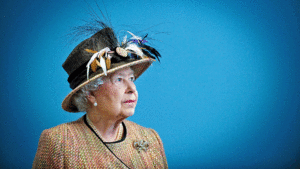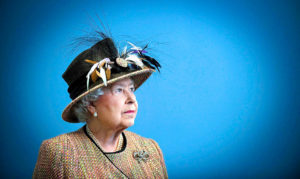Poor old Princess Margaret, who died 20 years ago today, will probably always be remembered as a snarling, selfish, supercilious old bag. Her failings were so public, and make such good copy, that hardly anyone who writes about her gives the impression that they are talking about a real person.
Christopher Hitchens, that unthinking man’s iconoclast, once called her “an averagely-volatile woman from a disadvantaged family”. He was almost being nice, but like so many others, he only really used her as an excuse to tell hideous anecdotes. Craig Brown published a whole book that pasted together the worst stories that people recorded about her in their diaries. It was a sure and sorry way to ensure your letters were published after you were gone: put in an anecdote about Princess Margaret being difficult or looking, as Nancy Mitford had it, “excessively common”.
Remember, these are not tabloid reports. This isn’t the rough and tumble of a free press. We are quoting public intellectuals. Despite Margaret being awful, as they saw it — trashy and appalling, rude and condescending, and, frankly, low brow — the elites found her irresistible. Few of us are too classy for gossip, too clever to mock an appearance instead of imagining what lies beneath it. Margaret’s punishment for projecting upper-class indifference, privileged selfishness, is to be seen as more of a soap-opera character than a woman. Perhaps that says more about us than her.
Her husband, horrible bully that he was, once set her dress on fire. “Good thing too, I hate that material,” he said. To which Margaret replied: “Material is a word we do not use. We call it stuff.” This sort of thing gets held up as inexhaustible snobbishness. Really, it’s a stiff upper lip, splendid resilience in the face of abuse. And anyway, can’t we live with a little high handedness in our princesses? Consider her nephew’s current reputation and Margaret’s blue-blooded insistence on calling scrambled eggs buttered eggs starts to look rather appealing. It’s a small price to pay for a stable and enduring monarchy: that a king’s daughter’s might occasionally be too royal.
But living off the public purse makes you fair game for voyeuristic bitching: there is an assumed public ownership of Royal lives. The story of Margaret and the Queen, along with the Queen Mother, getting the giggles when T. S. Eliot read The Waste Land at Buckingham Palace is often reference to show what a bunch of philistines the Royal Family is — as if Modernist poetry has anything to do with constitutional monarchy. (And as if most of the rest of us wouldn’t have done the same. Eliot was a terrible reader.) When people enjoy that story, I am reminded of the painter Francis Bacon, who once booed Margaret off stage at a party because her singing wasn’t very good; the poor woman ran out in tears. Somehow when you are born into the Royal cage, many intelligent people think it is acceptable, maybe even clever, to treat you like you’re an animal.
People like Christopher Hitchens did this because they had a bigger target: the institution of monarchy. He could happily paint the Windsors as emotionless bastards without caring very much about their so-called victims. But the old saw about Margaret being the lamb sacrificed for the good of The Firm needs investigating. It fits the narrative of heartless Hanovarians to say that the Princess wasn’t allowed to marry Peter Townsend out of cruelty or myopic traditionalism or whatever. It’s a simplification, though, to see it as a case of the establishment crushing young love for the sake of expediency.
Sarah Bradford reports a friend saying “Princess Margaret was very religious, much more than you would think”. Yes, her desire to marry a divorcé was a moral and constitutional dilemma: the Queen was the head of a church that didn’t allow such things. But in the story about the institutional thwarting the individual, Margaret and her feelings have been ignored. As Bradford says: “Asked whether, as the general public perceived it, she had been sacrificed on the altar of the monarchy, the queen’s private secretary replied simply, ‘She sacrificed herself’.”
Margaret defies the stereotype, then, of a selfish, useless celebrity. Jonathan Freedland once said of her: “Five decades before Paris Hilton, there was the current Queen’s sister, Princess Margaret — an object of glamour and gossip, permanently on vacation, internationally famous yet achieving nothing at all.” (If only she had written book reviews for the New York Review of Books!) If you are more interested in bourgeois tattle-rags than humdrum duties, it’s easy to share his view that she did nothing at all. But in reality, Margaret was a great charity worker. She was a patron of the London Lighthouse, an AIDs charity more famous for its association with Princess Diana, and she used to visit patients there and make them laugh. (She did her work without any media attention and before Princess Diana was involved.)
Margaret’s friend Lady Glenconner had a son with AIDs at the height of the epidemic; Margaret turned up and gave the boy a big hug as if nothing had changed. But while Diana was hugely — rightly — praised for shaking AIDs patients’ hands, Margaret remained in the shadows. Of course, Margaret didn’t want attention for her good works, but that doesn’t mean we should dismiss them.
In the stories told about Margaret, style so often comes before substance. It’s easy to use anecdotes to make someone look bad, but there are plenty of stories that make Margaret seem not just nice but remarkably normal — the opposite of the character drawn by gossipy republicans. Gore Vidal reported how he and she once saved a number of bees from drawing in a swimming pool at Windsor. “Go forth and make honey,” the charming and humorous Princess said, in what Vidal called “a powerful Hanoverian voice”. When she visited Lady Glenconner, she would do her friend’s hair and lay fires in the grates. On these visits, she showered out of a bucket, ate tinned food, and went scrambling up mountains. Away from people who were desperate to say something shocking and scathing about her, Margaret appears to have been quite ordinary. Likeable, even.
One of the few people who seems to really understand Margaret is the biographer Selina Hastings, who said that the Princess,
“looked at the world outside between the bars of her extremely comfortable cage. She was inquisitive and she was courageous, and sometimes she ventured halfway out. But the moment it looked as though there may be difficulties, back she flew into her cage, slamming the door behind her.”
Margaret was forced into public life, and when she was expected to accept people’s offensive intrusions into her life, she sometimes refused. She wasn’t perfect; but she was goaded and cornered. As Ferdinand Mount said, “being ghastly is so much expected of her that it becomes her party piece”.
Craig Brown called her life “Cinderella in reverse”, in a classic example of our inability to see Margaret as anything but a character out of a story. “Nothing is as thrilling as they said it would be; no one is as amusing, as clever, as attractive or as interesting,” he wrote. He could have been talking about all the journalists, biographers, diarists, and so on, who used her to fill their pages.
Margaret, unlike Cinderella, was never destined to be a queen; she was first and foremost a sister. There was a constant, silent presence in her public life — a gold standard of decorum — against which she was judged. Elizabeth and Margaret are, like Kate and Meghan, presented as stereotyped female opposites: the good wife and the wayward celebrity, the modest Queen and the flagrant Princess. Such reductions make for a lonely life.
For Margaret, this perpetual isolation began at her sister’s coronation. According to Sarah Bradford, Margaret had “very mixed feelings because I adored my father and he was dead and yet I felt I had to be pleased for Lillibet being crowned Queen though I knew that in a way I’d lost her.” She was only 23 when that happened.
Disclaimer
Some of the posts we share are controversial and we do not necessarily agree with them in the whole extend. Sometimes we agree with the content or part of it but we do not agree with the narration or language. Nevertheless we find them somehow interesting, valuable and/or informative or we share them, because we strongly believe in freedom of speech, free press and journalism. We strongly encourage you to have a critical approach to all the content, do your own research and analysis to build your own opinion.
We would be glad to have your feedback.
Source: UnHerd Read the original article here: https://unherd.com




